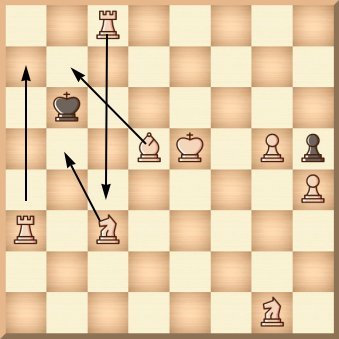







Online Chess is a game of strategy believed to have been invented more then 1500 years ago in India. It is a game for two players, one with the light pieces and one with the dark pieces. The chessboard is eight squares long by eight squares wide.
The game of chess is played between two opponents who move their pieces alternately on a square board called a ‘chessboard’. The player with the white pieces commences the game.
The objective of each player is to place the opponent’s king ‘under attack’ in such a way that the opponent has no legal move. The player who achieves this goal is said to have ‘checkmated’ the opponent’s king and to have won the game.
If the position is such that neither player can possibly checkmate and no legal move possible, the game is drawn called stalemate.
The chessboard is composed of an 8 x 8 grid of 64 equal squares alternately light (the ‘white’ squares) and dark (the ‘black’ squares). The chessboard is placed between the players in such a way that the near corner square to the right of the player is white.
| A white king |  |
| A white queen |  |
| Two white rooks |  |
| Two white bishops |  |
| Two white knights |  |
| Eight white pawns |  |
| A black king |  |
| A black queen |  |
| Two black rooks |  |
| Two black bishops |  |
| Two black knights |  |
| Eight black pawns |  |
At the beginning of the game one player has 16 light-coloured pieces (the ‘white’ pieces); the other has 16 dark-coloured pieces (the ‘black’ pieces).

The King is the most important piece. When it is trapped, the whole team loses. The King can move one square in any direction - for example, to any of the highlighted squares in this diagram. (An exception is castling, which is explained later.) The King may never move into check - that is, onto a square attacked by an opponent’s piece.
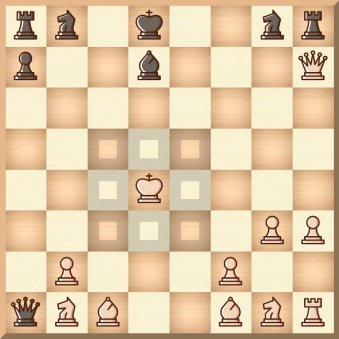
The Queen can move in a straight line any number of squares in any one direction - horizontal, vertical, or diago- nal as long as its path is not blocked by its own color pieces. It can capture a piece of the opposite color in its path shown in red. The white Queen can reach any of the highlighed squares shown in this diagram. It can capture the black pawn highlighted in red.
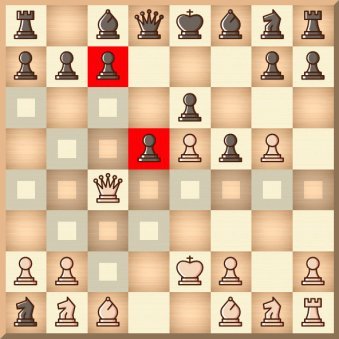
The Rook is the next most powerful piece. The Rook can move any number of squares in one direction – vertically or horizontally– if its path is not blocked. For example, the squares this white Rook can move to are highlighted in the chessboard. It can capture the black Bishop to its front shown in red. Its path is blocked if it wants to move right most side by white pawn.
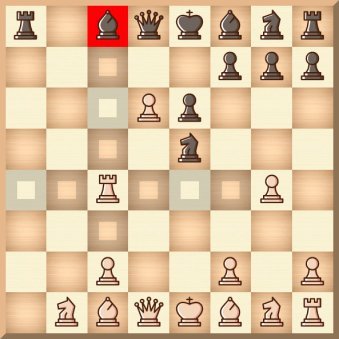
The Bishop can move any number of squares diagonally if its path is not blocked. Note that this Bishop starts on a light square and can reach only other light squares. At the beginning of the game, you have one ”dark-square” Bishop and one ”light-square” Bishop. The Bishop’s moves are shown by the highlighted squares in the following chess- board. This white Bishop can capture the black queen shown in red.
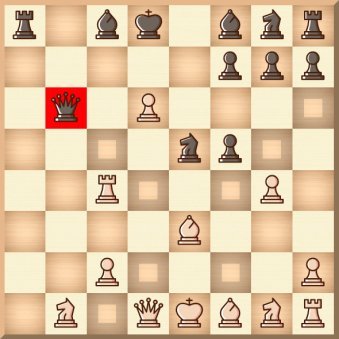
The Knight’s move is special. It hops directly from its old square to its new square. The Knight can jump over other pieces between its old and new squares. Think of the Knight’s move as an ”L.” It moves two squares horizontally or vertically and then makes a right-angle turn for one more square (“2 then 1”). The Knight always lands on a square opposite in color from its old square. White Knight having circle arround it, moves are highlighted. It can capture black pawn.
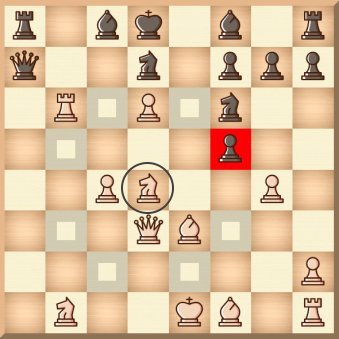
The Pawn moves straight ahead (never backward), but it captures diagonally. It moves one square at a time, but on its first move it has the option of moving forward one or two squares. In the diagram, the highlighted squares indicate possible destinations for the pawns. The White pawn is on its original square, so it may move ahead either one or two squares.
What are the rules for pramotion of pawn?If a pawn advances all the way to the opposite end of the board, it is immediately ”promoted” to an- other piece, usually a Queen. It may not remain a pawn or become a King. Therefore, it is possible for each player to have more than one Queen or more than two Rooks, Bish- ops, or Knights on the board at the same time.
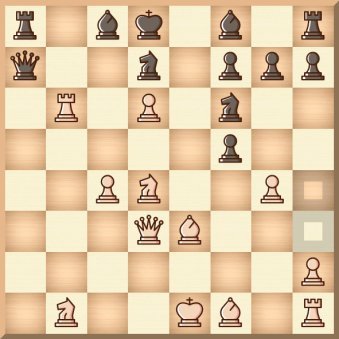
The Pawn moves straight ahead (never backward), but it captures diagonally. During capture it has the option of moving forward one or diagonally capture. In the diagram, the highlighted squares indicate possible destinations for the pawns. The white Pawn has already moved, so it may move ahead only one square at a time or capture diagonally. The squares on which these white Pawn may capture are indicated in red color.
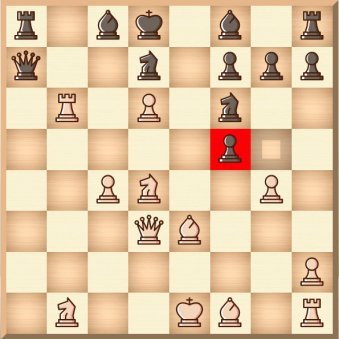
Each player may castle only once during a game and only when certain conditions are met. Castling is a special move that lets a player move two pieces at once - the King and one Rook. In castling, the player moves his King two squares either to its left or right toward one of his Rooks. At the same time, the Rook involved goes to the square on the other side of the King. In order to castle, neither the King nor the Rook involved may have moved before. Also, the King may not castle out of check, into check, or through check. Further, there may not be pieces of either color between the King and the Rook involved in castling. The chessboard shown below shows the white King before castling and position after castling.
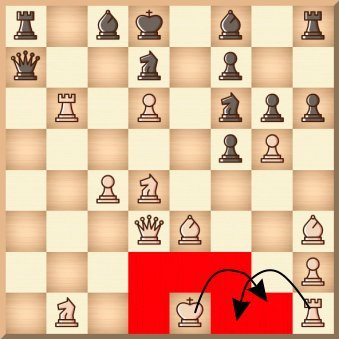
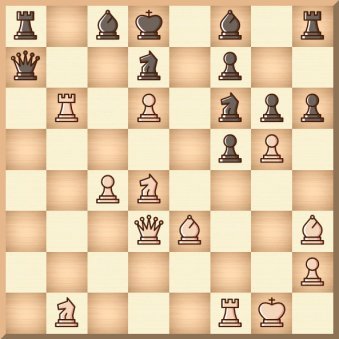
The main goal of chess is to checkmate your opponent’s
King. The King is not actually captured and removed from
the board like other pieces.
Stalemate is a situation in the game of chess where the player whose turn it is to move is not in check but has no legal move.
The rules of chess provide that when stalemate occurs, the game ends as a draw. During the endgame, stalemate is a resource that can enable
the player with the inferior position to draw the game rather than lose.
As shown black king is not in attack/check and black payer is not having any legal moves as all the squares arround the king are under attack so king can not be moved black pawn also can't move. This resulted in stalemate condition.
